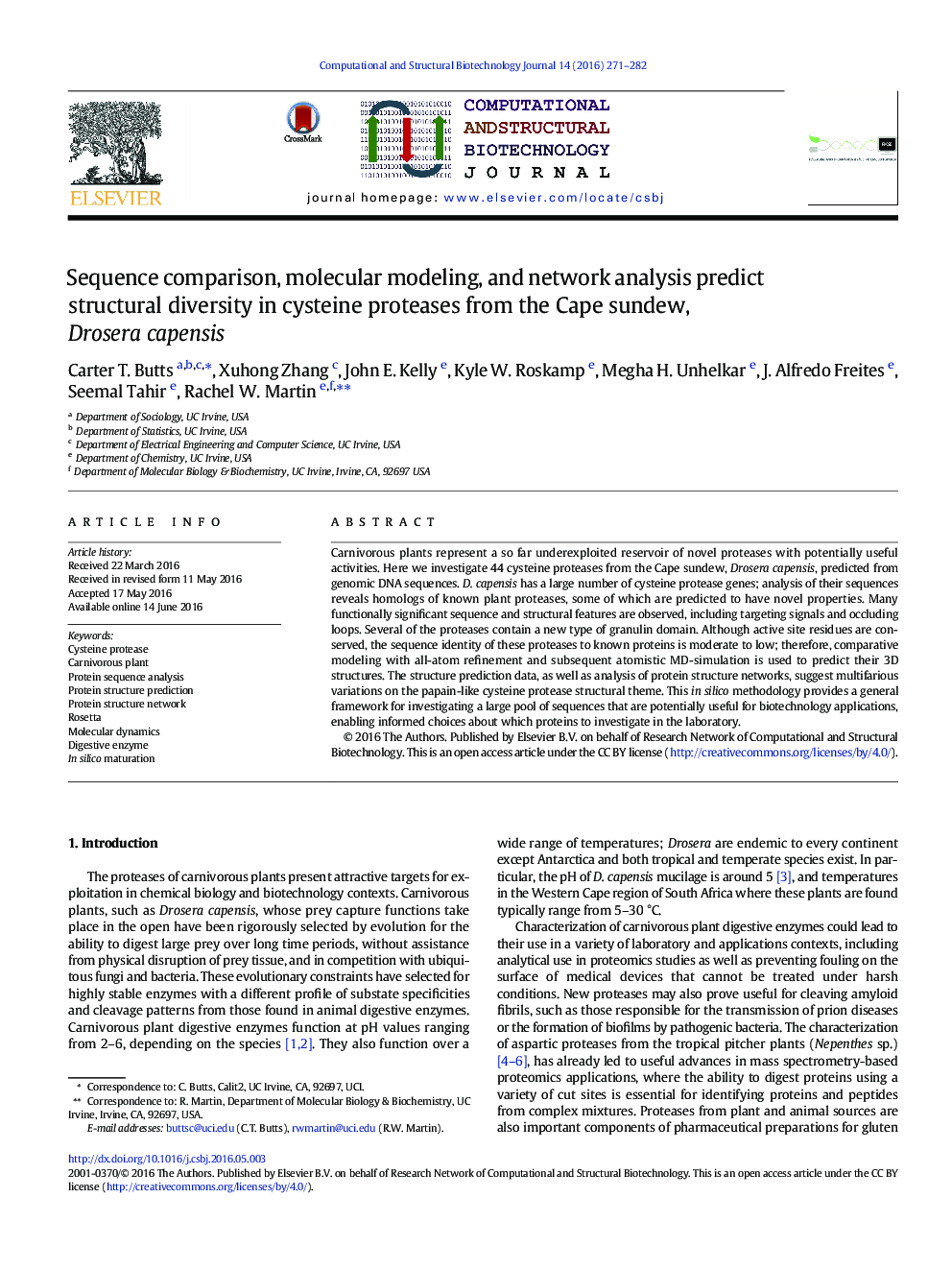| Article ID | Journal | Published Year | Pages | File Type |
|---|---|---|---|---|
| 2079098 | Computational and Structural Biotechnology Journal | 2016 | 12 Pages |
•44 new cysteine proteases from the carnivorous plant Drosera capensis are described.•Structure prediction and molecular dynamics simulation predict overall folds similar to papain.•Functionally significant sequence and structural features are observed, including targeting signals and occluding loops.•Several of the proteases contain a new type of granulin domain.•Protein structure networks reveal global differences in interactions among chemical groups.
Carnivorous plants represent a so far underexploited reservoir of novel proteases with potentially useful activities. Here we investigate 44 cysteine proteases from the Cape sundew, Drosera capensis, predicted from genomic DNA sequences. D. capensis has a large number of cysteine protease genes; analysis of their sequences reveals homologs of known plant proteases, some of which are predicted to have novel properties. Many functionally significant sequence and structural features are observed, including targeting signals and occluding loops. Several of the proteases contain a new type of granulin domain. Although active site residues are conserved, the sequence identity of these proteases to known proteins is moderate to low; therefore, comparative modeling with all-atom refinement and subsequent atomistic MD-simulation is used to predict their 3D structures. The structure prediction data, as well as analysis of protein structure networks, suggest multifarious variations on the papain-like cysteine protease structural theme. This in silico methodology provides a general framework for investigating a large pool of sequences that are potentially useful for biotechnology applications, enabling informed choices about which proteins to investigate in the laboratory.
Graphical abstractFigure optionsDownload full-size imageDownload as PowerPoint slide
